A Detail Insight Of Sentiment Analysis In AI Training Model
Aisha Aslam
What is Sentiment Analysis? How it is helping in AI era?
Sentiment analysis is a technique that scans textual data to identify if its largely positive, negative or neutral in nature. It uses the Natural Learning Technique (NLP) and is also known as Opinion Mining, and Emotional AI.
Business organizations around the world rely on Sentiment Analyse to learn how people feel towards the offerings of their brand. It collects and analyses data from different online sources such as social media conversations, online forums, web chats, blogs, emails, etc. Since these sources are varied and mostly unorganised and unstructured, analysing them manually is next to impossible.
Text sentiment analysis makes use of sophisticated technology like Data Mining, Machine Learning and Artificial Intelligence to help businesses:

- Learn how to improve their products and services
- Have a pro-active response to customer feedback
- Respond sooner to negative sentiment to turn the tide in their favour
- Have in place a real time sentiment analysis system
- Increase customer satisfaction by truly listening to them
Types of Sentiment Analysis
Businesses need to understand the different types of Sentiment Analysis, to make it work for their specific business context. Here is a look at the five principal types of sentiment analysis

1. Fine-grained Sentiment Analysis
A very direct form of analysis, fine-grained sentiment analysis measures the degree of polarity of people’s opinions about the brand. People express their sentiment about the brand through rating-based system such as stars, or a smiley based system, where the customer states if he/she is happy, very happy, satisfied, unhappy, or very unhappy with the performance of the brand. This model mines all these varied forms of ratings from multiple sources to give you a unified insight.
2. Emotion detection
This sentiment classification method points out the emotions the customer feels while using the brands products or services. For example, if they have ordered food delivery from a food chain, they may like the taste, while hate the delay in delivery or have an issue with the packaging of food. Apart from like and dislike, the customer may experience a range of other emotions as well. Emotion detection helps identify specific or the gamut of emotions by leveraging machine learning algorithms and lexicons.
There is a flipside of this model, however. When it comes to expressing their sentiment, customers can get quite innovative and employ a variety of ways to express themselves such, emojis, text, jokes, etc. Thus, brands have to make sure that they adopt an advanced model adept at identifying complex emotional expressions.
3. Aspect-based sentiment analysis
Customer reviews often point out flaws that brands have failed to notice about their product and services. It helps brands correct their mistakes and drive better sales through improved customer loyalty. Aspect based sentimental analysis helps brand identify these very issues highlighted by customers in their review. For example, an airline customer could complain about the business taking very long to issue refunds. Thus, airline could fix their refund process to be smoother and win the trust of their customers.
Thus, the aspect-based analysis is great way for brands to keep their ears to the ground and understand how the customers actually perceive their brand offering. It points out the appealing and un-appealing aspects of the brand according to the customer.
4. Intent Analysis
Intent analysis aims at degerming the type of intention expressed in the text, and is mostly used to streamline customer service operations. It is important because it lets brands know the requirements of the customer and predicts efficiently, their next step. That is if they are going to buy the product, give-up or recommend the product. This helps in faster data classification. For instance, a user expresses his frustration at the short battery life of a device and his intention to return it the next day.
While its impossible for the brand to read through all such online conversations manually, they can easily catch the drift using Intent Analysis. Its powerful automated systems can glean through thousands of texts in a short span and reveal the underlying intention.
This is where automated systems that use artificial intelligence to sort through large volumes of content become very useful. They can successfully analyse the intent behind any text in seconds.
5. Multilingual Analysis
As the name suggests, this method asses’ sentiments in different languages. The choice of languages comes from the geographies you do business in, the countries to which you ship your products more, etc. This technique uses language specific mining algorithms, translators, sentiment lexicons, and the like.
Sentiment Analysis Plays a Major Role in Machine Learning
Sentiment analysis is one of the most commonly used tools of Machine Learning. It makes emotional mining possible without any human input. It trains the ML tools to identify emotion by training them with examples of sentiment in the said text.
Sentiment text analysis can even be used to identify sarcasm in texts. For example, an online comment which says, “the product helped me lose 35 kgs in 5 days”, isn’t obviously a positive review. The tool will categorize this customer sentiment as negative, just as human operator would, saving thousands of staff hours.
Conclusion
We have seen how useful text sentiment analysis is helping business organisations gauge public opinion, and take timely actions in improving their product and services Sentiment text analysis leverages automation for faster turnaround times. It helps businesses not only save time and money but helps in informed decision-making.

 Let’s get started
Let’s get started



 info@triyock.com
info@triyock.com